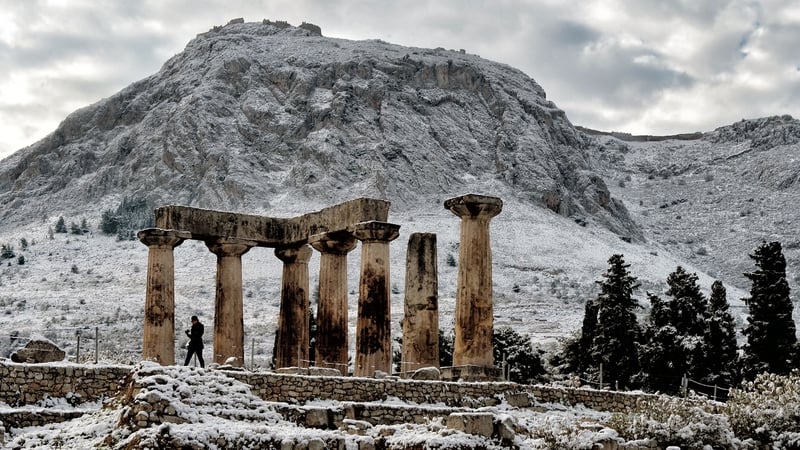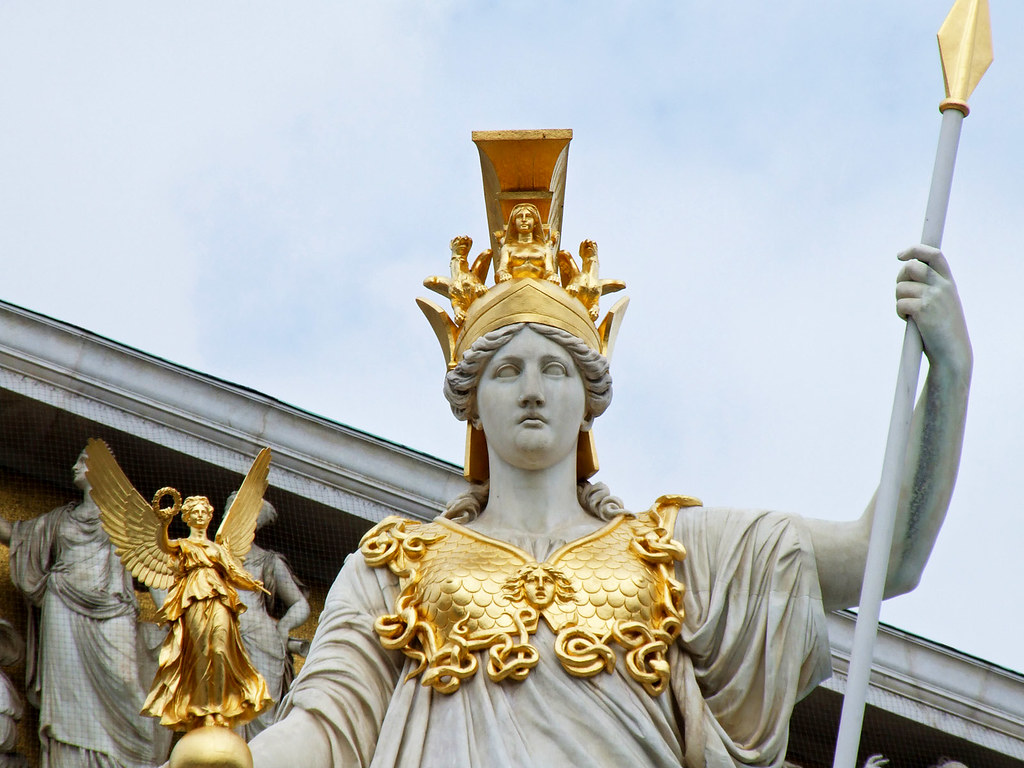Face it, we all know the names, spheres of ifluence and family lines of the major Hellenic Gods, but there are many full or half Gods and Goddesses we know by name only, if that. I'd like to list some of the many, many, many minor divinities within our pantheon today as a reminder of the wealth of immortal beings watching over our world and our very lives. Today, those whose names start with an I through those who start with Z. Note: I am leaving out divinities bound to landmarks like hills and rivers for now, but it's safe to assume all major rivers, mountais and the like have divine guardians. For the minor deiries from A through H, go
here.
Ikhnaea (Ιχναία): tracking
Ioke (Ἰωκή): battles
Iynx (Ιύνξ): love charms
Kakia (Kακία): bad habits and bad morals
Kalokagathia (Καλοκαγαθία): nobility
Kaeros (Καιρός): opportunity
Keraon (Κεραων): of mixing wine
Keto (Κῆτώ): dangers of the ocean and of sea monsters
Khloris (Χλωρίς): flowers
Khrysos (Χρύσος): gold
Koalemos (Κοάλεμος): stupidity
Komos (Κόμος): celebrating and partying
Koros (Κόρος): over-indulgence
Korymbus (Κόρυμβος): of the fruit of the ivy
Kratos (Κράτος): strength and power
Kydoimos (Κυδοιμός): confusion and the noise of battle
Leukothea (Λευκοθέα): helps sailors in trouble
Limos (Λιμός): hunger and starvation
The Litae (Λιταί): prayer
Lyssa (Λύσσα): rage
The Machai (Μάχαι): fighting and combat
Mania (Μανία): of spirits of insanity
Matton (Μάττων): kneading dough
Momus (Μῶμος): mockery, blame and criticism
Moros (Μόρος): doom
The Neikea (τὰ Νείκη): feuds and arguments
Nereus (Νηρέας): fish
Nomos (Νόμος): law
Oizys (Ὀϊζύς): sadness
Palaestra (Παλαίστρα): wrestling
Palioxis (Παλίωξις): retreat from battle
Peitharchia (Πειθαρχία): obeying
Peitho (Πειθώ): persuasion and seduction
Penia (Πενία): poverty and need
Penthus (Πένθος): mourning
Pepromene (Πεπρωμένη): fate of the universe
Pheme (Φήμη): rumours and gossip
Philomelos (Φιλόμελος): agriculture; wagon and the plough
Philophrosyne (Φιλοφροσύνη): kindness
Philotes (Φιλότης): friendship, affection and sex
Phobos (Φόβος): panic and fear
The Phonoi (Φόνοι): murder and killing
Phorkys (Φόρκυς): hidden dangers of the sea
Phrike (Φρίκη): horror
Phthonus (Φθόνος): envy and jealousy
Pistis (Πίστις): trust
Poine (Ποίνη): punishment and penalty for the crime of murder
Polemos (Πόλεμος): war
Ponos (Πόνος): hard labour
Poros (Πόρος): being able to accomplish something
Pontos (Πόντος): the sea itself, father of fish and other sea creatures
Praxidike (Πραξιδίκη): getting justice
Proioxis (Προίωξις): pursuit on the battlefield
Prophasis (Πρόφασις): excuses
Psamathe (Πσαμάθη): sandy beaches
Tekhne (Τέχνη): art and skill
Tethys (Τηθύς): rivers, fountains and clouds
Thanatos (Θάνατος): death and mortality
Thaumas (Θαῦμας): wonders of the sea
Thoosa (Θόοσα): strong currents
Thrasos (Θράσος): boldness
Tyche (Τύχη): luck, chance and fate
Zelos (Ζῆλος): rivalry, devotion, emulation and envy









